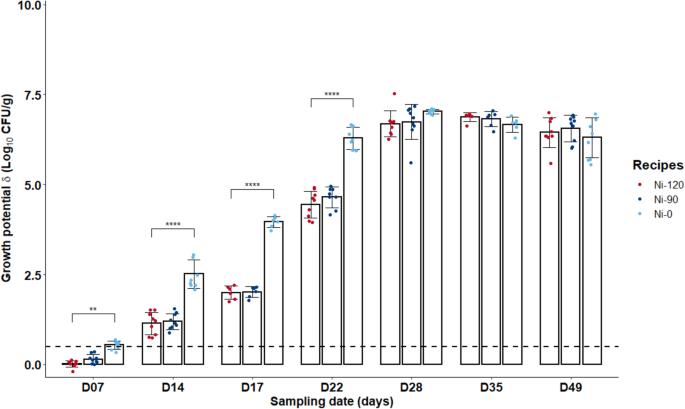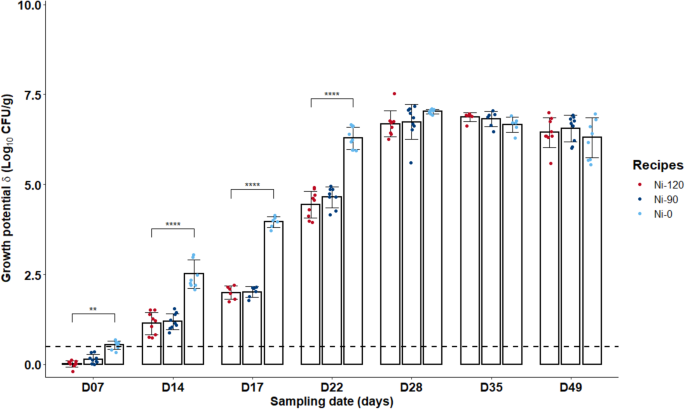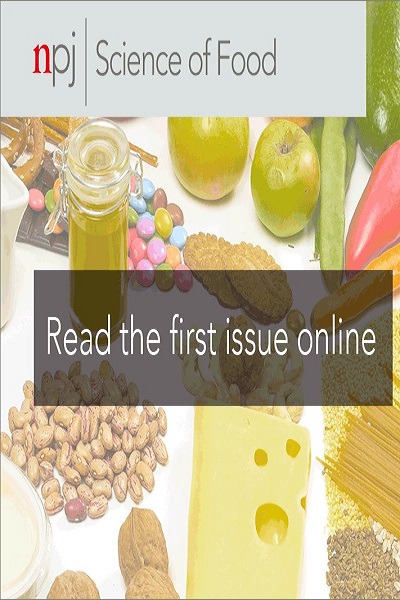亚硝酸钠还原、去除或替代对Fischer 344大鼠腌制和烹饪肉类的微生物生长、食品安全、结肠生态系统和结直肠癌的影响。
IF 6.3
1区 农林科学
Q1 FOOD SCIENCE & TECHNOLOGY
引用次数: 0
摘要
流行病学和实验证据表明,食用加工肉与结直肠癌癌症风险相关。几项研究表明,亚硝酸盐或硝酸盐添加剂通过N-亚硝基化合物的形成而参与。与参考水平(120 mg/kg火腿),去除和减少亚硝酸钠(90 mg/kg)类似地减少F344大鼠的癌前病变,但只有减少对单核细胞增多性李斯特菌生长的抑制作用与使用参考亚硝酸盐水平和有效的脂质过氧化控制获得的抑制作用相当。在测试的三种亚硝酸盐替代品中,与参考水平相比,没有一种能显著增加:由于硝酸盐的存在,蔬菜库存与参考亚硝酸盐水平非常相似,酵母提取物诱导了强烈的管腔过氧化,尽管没有NOCs,但大鼠的癌前病变没有减少,富含多酚的提取物在大鼠肿瘤前病变中诱导了最明显的下降趋势,但同时在粪便中存在亚硝基铁。除蔬菜原料外,其他替代品在减少单核细胞增多性李斯特菌生长方面不如亚硝酸钠有效。本文章由计算机程序翻译,如有差异,请以英文原文为准。


Effects of sodium nitrite reduction, removal or replacement on cured and cooked meat for microbiological growth, food safety, colon ecosystem, and colorectal carcinogenesis in Fischer 344 rats
Epidemiological and experimental evidence indicated that processed meat consumption is associated with colorectal cancer risks. Several studies suggest the involvement of nitrite or nitrate additives via N-nitroso-compound formation (NOCs). Compared to the reference level (120 mg/kg of ham), sodium nitrite removal and reduction (90 mg/kg) similarly decreased preneoplastic lesions in F344 rats, but only reduction had an inhibitory effect on Listeria monocytogenes growth comparable to that obtained using the reference nitrite level and an effective lipid peroxidation control. Among the three nitrite salt alternatives tested, none of them led to a significant gain when compared to the reference level: vegetable stock, due to nitrate presence, was very similar to this reference nitrite level, yeast extract induced a strong luminal peroxidation and no decrease in preneoplastic lesions in rats despite the absence of NOCs, and polyphenol rich extract induced the clearest downward trend on preneoplastic lesions in rats but the concomitant presence of nitrosyl iron in feces. Except the vegetable stock, other alternatives were less efficient than sodium nitrite in reducing L. monocytogenes growth.
求助全文
通过发布文献求助,成功后即可免费获取论文全文。
去求助
来源期刊

NPJ Science of Food
FOOD SCIENCE & TECHNOLOGY-
CiteScore
7.50
自引率
1.60%
发文量
53
期刊介绍:
npj Science of Food is an online-only and open access journal publishes high-quality, high-impact papers related to food safety, security, integrated production, processing and packaging, the changes and interactions of food components, and the influence on health and wellness properties of food. The journal will support fundamental studies that advance the science of food beyond the classic focus on processing, thereby addressing basic inquiries around food from the public and industry. It will also support research that might result in innovation of technologies and products that are public-friendly while promoting the United Nations sustainable development goals.
 求助内容:
求助内容: 应助结果提醒方式:
应助结果提醒方式:


